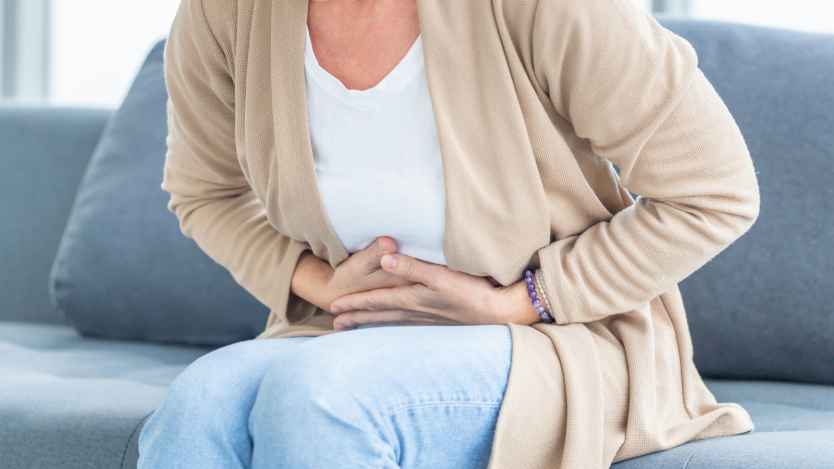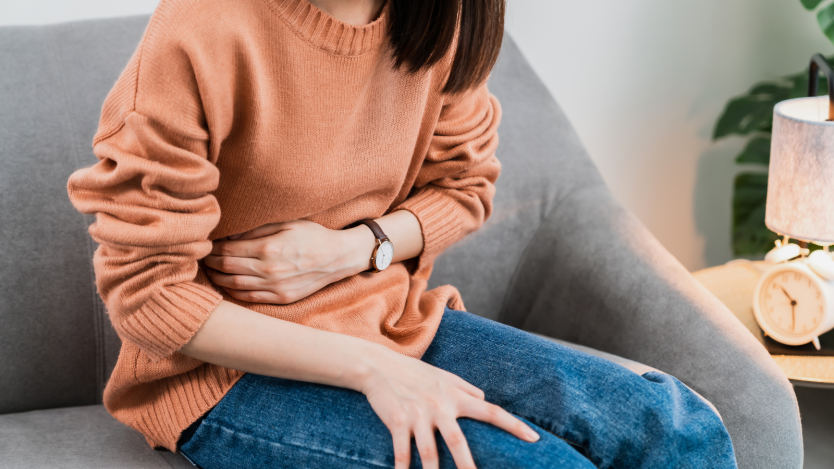Uterine fibroids: symptoms

- What are uterine fibroids?
- Abnormal uterine bleeding
- Pelvic pain or heaviness
- Compression of nearby organs
- Infertility in women
- How to relieve the symptoms of uterine fibroids?
- The symptoms of uterine fibroids depend directly on the type of fibroid, its location, the number of fibroids and their size.
- The main symptom of uterine fibroids is abnormal vaginal bleeding, appearing at intermenstrual periods and prolonging menstruation.
- To solve the symptoms of uterine fibroids, the only definitive option is surgery, which can be of different types.
What are uterine fibroids?
Uterine fibroids are mainly benign tumours that form in the uterus from the cells that make up the myometrium. These benign tumours usually appear in women over the age of 35, with the incidence increasing as we approach the menopausal ages.

Do you need myomectomy surgery?
Request a free and immediate appointment with our specialists in Gynaecology
The appearance of uterine fibroids is multifactorial, as there are several variables that may or may not favour their appearance. Among them, there is a genetic predisposition associated with a certain gene that predisposes some women to suffer from fibroids, although this does not mean that if you have them they are bound to appear.
On the other hand, there are some enzymes of an immunological nature that favour their appearance, and they are also more likely to appear in black women than in other ethnic groups.
Finally, and perhaps the most relevant factor in the formation of uterine fibroids is hormones, with the amount of female hormones being directly related to the size of the fibroids, to such an extent that the patient is sometimes subjected to pharmacological treatment that reduces the size of the uterine fibroids by up to 50% and thus facilitates their removal.
It is also important to mention that uterine fibroids do not necessarily present symptoms or problems of any kind, but it will depend on their characteristics (size, quantity and location). However, if uterine fibroids are symptomatic, they must be removed.

Abnormal uterine bleeding
Abnormal uterine bleeding is the symptom related to uterine fibroids for which most women seek specialist consultation, whether in primary care or gynaecology.

Do you need myomectomy surgery?
Request a free and immediate appointment with our specialists in Gynaecology
As we mentioned at the beginning of the article, the patients who most frequently present these symptoms are over 35 years of age and come to the clinic because they have suffered from any of the following cases:
- Alteration of menstruation with increased bleeding over time or in greater quantity.
- Appearance of intermenstrual vaginal bleeding.
- Chronic or iron deficiency anaemia. Due to blood loss, patients may suffer from iron deficiency and consequent anaemia.
Pelvic pain or heaviness
Along with uterine bleeding, it is arguably the most common symptom of fibroids. It is usually related to subserosal fibroids whose growth is towards the outside of the uterus instead of towards the inside.
The symptom perceived by the patient is, in addition to heaviness in the area, acute discomfort at specific times during menstruation.
This symptom can be solved by taking painkillers at the times when the pain is most annoying, without interfering with daily life, although of course the pain and heaviness will depend to a large extent on the number and size of uterine fibroids present.
Compression of nearby organs
This symptom is directly related to pelvic pain or heaviness, as it is due to large subserosal uterine fibroids. It is usually detected in medical consultations related to other problems in organs close to the uterus, such as urinary and intestinal disorders, constipation, gas accumulation or an increase in abdominal circumference.

Why does this happen? Because subserosal uterine fibroids grow towards the outside of the uterus, as they are large fibroids they end up compressing nearby structures in the pelvic cavity (bladder, intestines, etc.), so depending on which organ is compromised, one type of symptom or another will be experienced.
Infertility in women
Although infertility with the presence of fibroids is not always directly related, it is true that uterine fibroids cause anatomical and functional alterations in the walls of the uterus that can reduce the chances of pregnancy and even increase the rate of miscarriage, with a higher percentage of miscarriages in women with multiple uterine fibroids.
Among the alterations of the uterus caused by uterine fibroids that may involve a problem related to infertility, we can find:
- Difficulty of access of spermatozoa into the fallopian tubes or of the descent of eggs for fertilisation.
- Distortion of the inner walls of the uterus, preventing or hindering the fertilised egg from adhering to the walls of the uterus.
- Alteration of the vascular system responsible for nourishing the foetus during the first days after fertilisation, as well as hormonal changes that impede its initial progression.

How to relieve the symptoms of uterine fibroids?
In the case of symptomatic uterine fibroids, although it is possible to slightly alleviate the symptoms with medication, it is recommended to remove them, especially if they are large symptomatic uterine fibroids.
Different surgical techniques can be used to remove uterine fibroids, the choice of which will be determined by the surgeon's opinion, the characteristics of the woman and the number, location and size of the patient's uterine fibroids.

Do you need myomectomy surgery?
Request a free and immediate appointment with our specialists in Gynaecology
Among the different surgical techniques used for the removal of uterine fibroids, some of them are briefly mentioned below:
- Surgical hysteroscopy: This is the least invasive procedure for the removal of uterine fibroids and can be performed without general or regional anaesthesia. It is used to remove small uterine fibroids growing towards the interior of the uterus.
- Myomectomy: This can be performed by abdominal or laparoscopic approach. Its use is chosen when the patient has a large number of uterine fibroids of considerable size. Both hysteroscopy and myomectomy preserve the uterus.
- Hysterectomy: This surgery can be performed by laparoscopy, vaginal access or abdominal access. In all of them, the objective is to remove the uterus affected by uterine fibroids. This technique is usually chosen in cases where the patient is elderly, has fulfilled her desire to have children or is clear that she does not want to have them. During hysterectomy, it may be decided to remove only the uterus, the uterus and cervix, or the uterus, cervix, ovaries and fallopian tubes.
Medical disclaimer: All the published content in Operarme is intended to disseminate reliable medical information to the general public, and is reviewed by healthcare professionals. In any case should this information be used to perform a diagnosis, indicate a treatment, or replace the medical assessment of a professional in a face to face consultation. Find more information in the links below:
